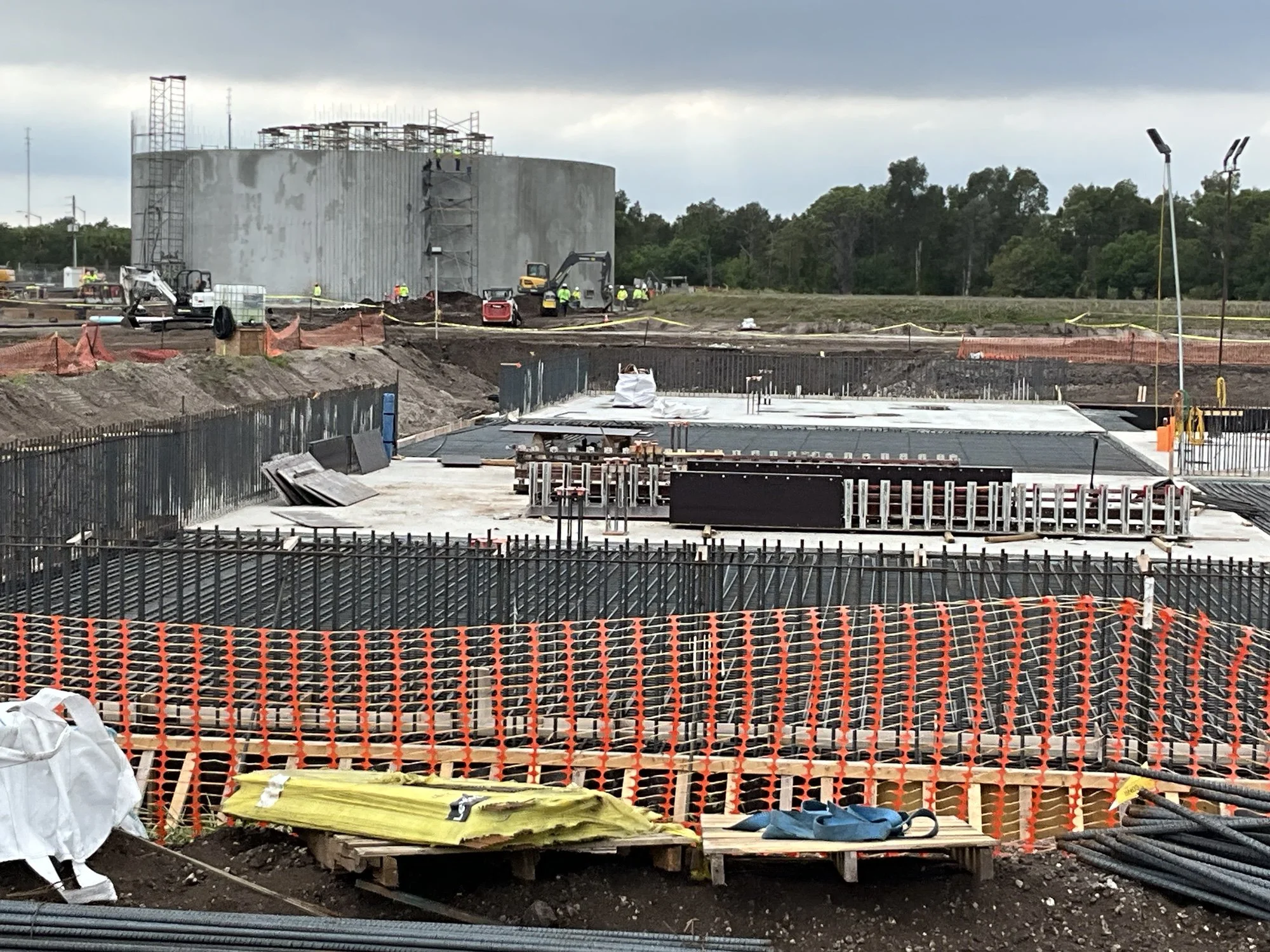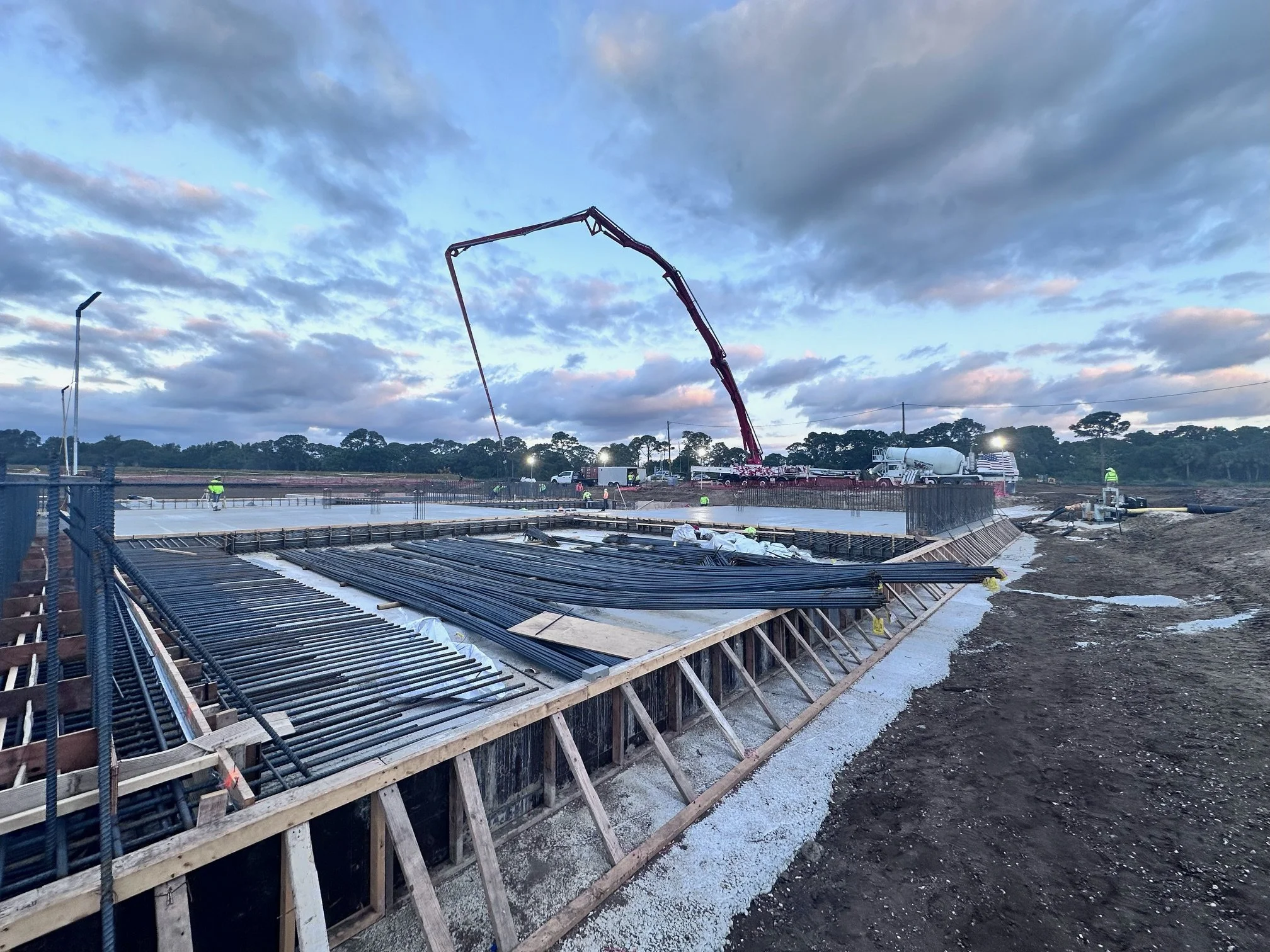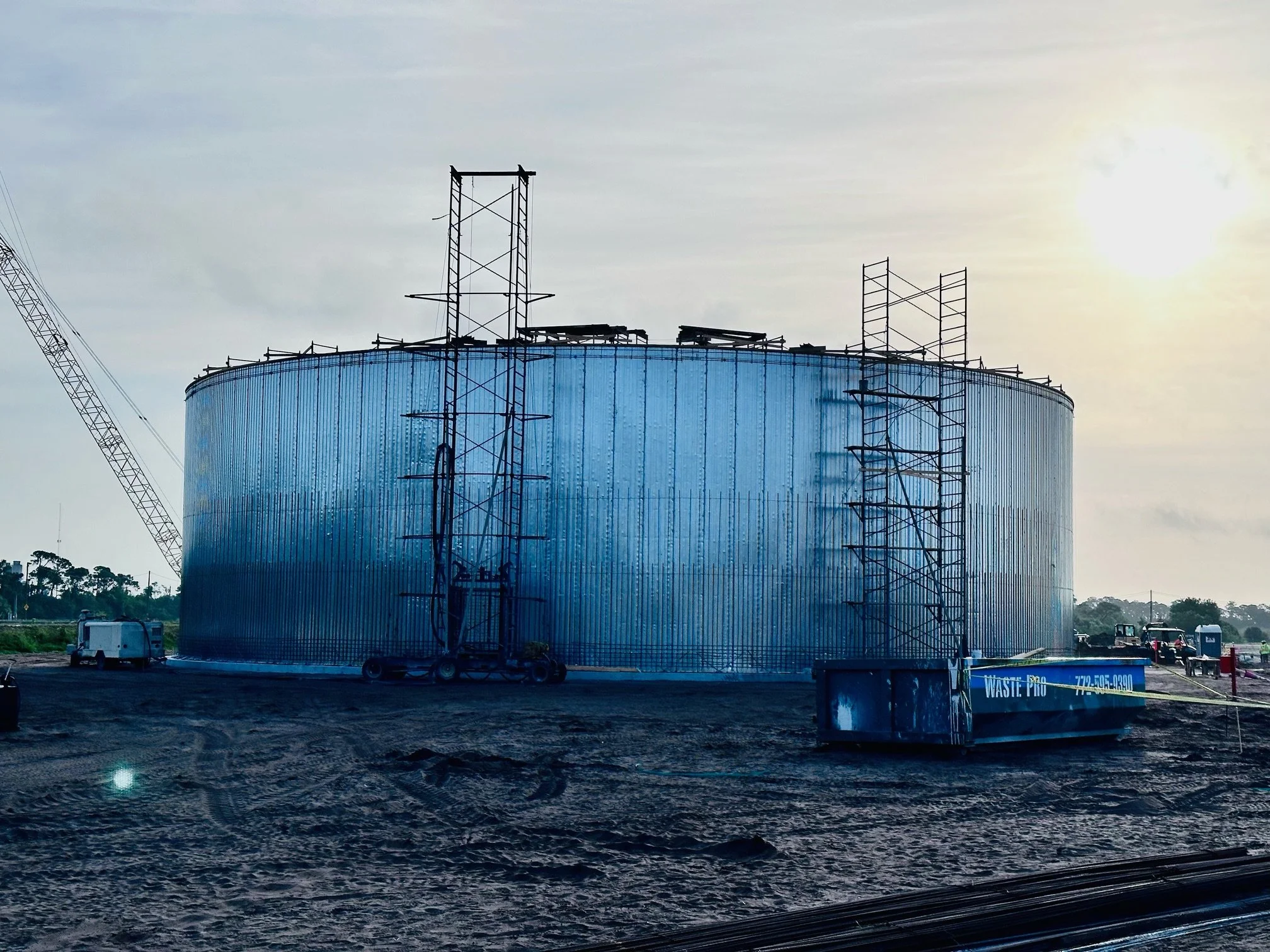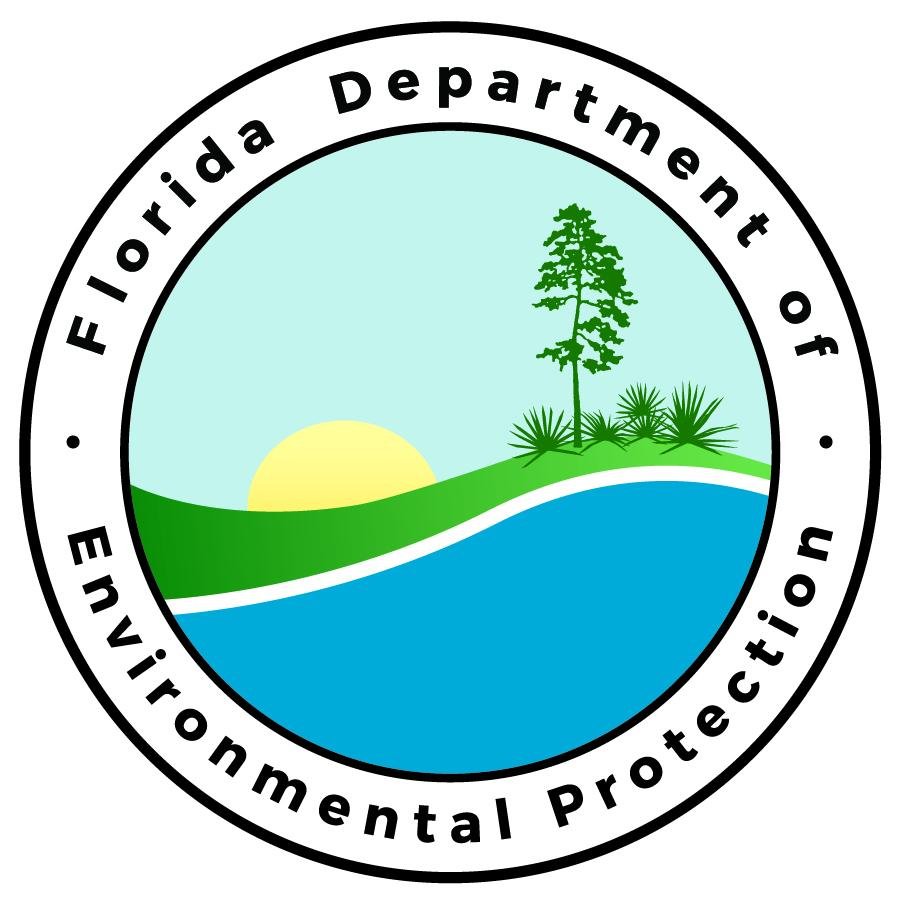Progress of the reclaim storage tank’s construction
This week’s Wastewater Wednesday features updates and photos showing the continuing progress of the reclaim storage tank’s construction, now nearing its final wall thickness and ready for the crew to move on to framing/building the domed roof of the tank.
Watch: virtual tour of the new reclamation facility!
FPUA Water Reclamation Operations Supervisor Mike Martin recently presented an update on the new Mainland Water Reclamation Facility to the Fort Pierce Sunrise Kiwanis Club, an active local community club that's dedicated to youth in our community. During his presentation, Mike shared a virtual tour of the completed plant, along with aerial photos showing progress of the AquaNereda foundation and the reuse tank.
AquaNereda basin concrete foundation poured
Today’s photos show the first major concrete pour of the AquaNereda basin’s foundation, with roughly 600 yards out of a total more than 3,500 yards poured this week. This will continue every week after until the foundation is done and ready to support the future walls. The build team has also started layering the pre-stressed concrete reuse storage tank with its first coats of shotcrete to add structural support.
Structural framing progress and major steel reinforcement
Today’s photos show the structural framing progress and major steel reinforcement of the primary treatment tank foundation, which is scheduled for its first of multiple concrete pours next week. The pre-stressed concrete reuse tank structure is vertical and is also ready for its first coat of shotcrete this week.
Introducing: Wastewater Wednesdays!
NEW RELEASE: We are very proud to launch Wastewater Wednesdays with this Facebook post. Every Wednesday, visit the FPUA Facebook page for another update about construction progress of the Sewer Treatment Plant that we’re currently building on Energy Lane.
Thank you to the Florida Department of Environmental Protection for your generous support of $15 million granted toward this project. Disclaimer: This work is funded in part through a grant agreement from the Florida Department of Environmental Protection’s Office of Resilience and Coastal Protection Resilient Florida Program. The views, statements, findings, conclusions, and recommendations expressed herein are those of the author(s) and do not necessarily reflect the views of the State of Florida or any of its subagencies.






